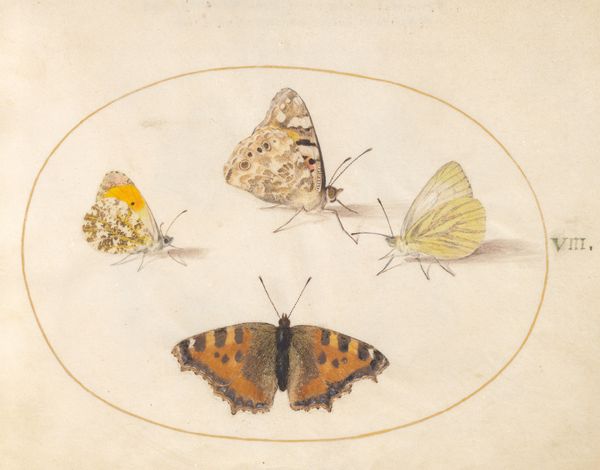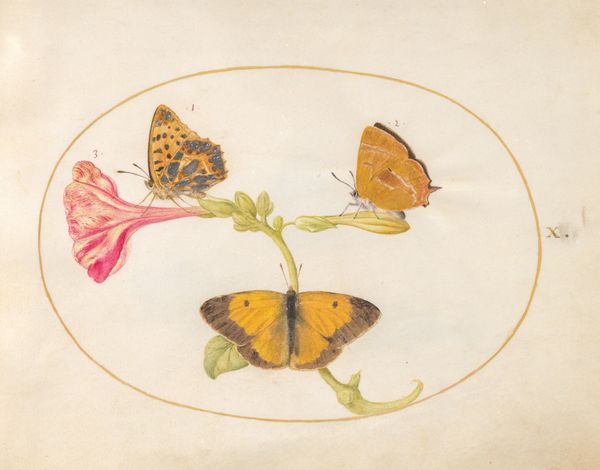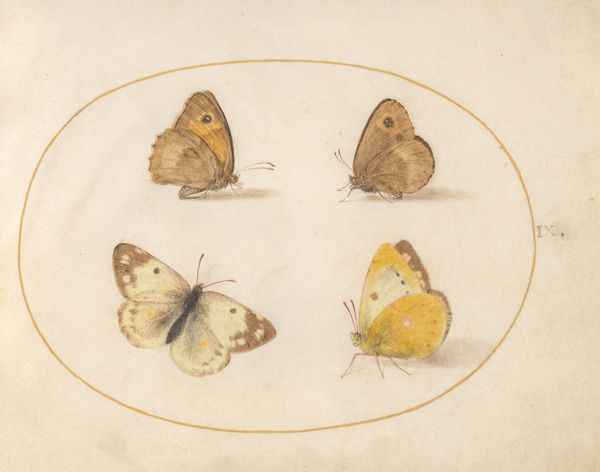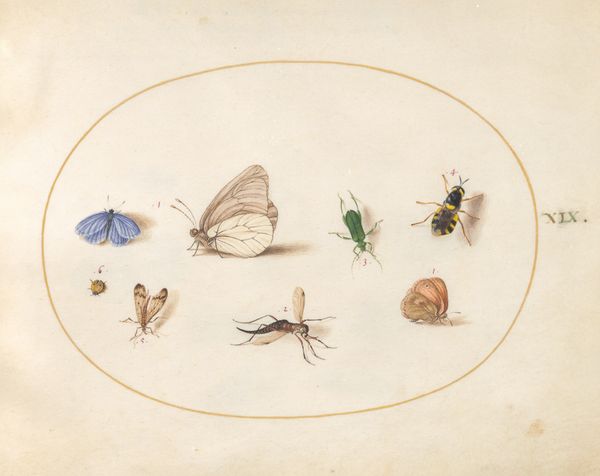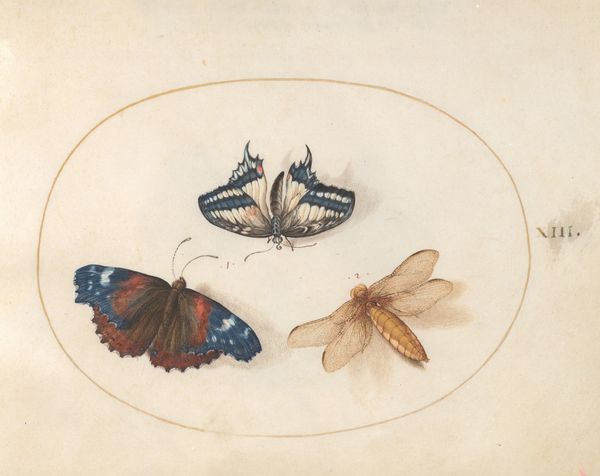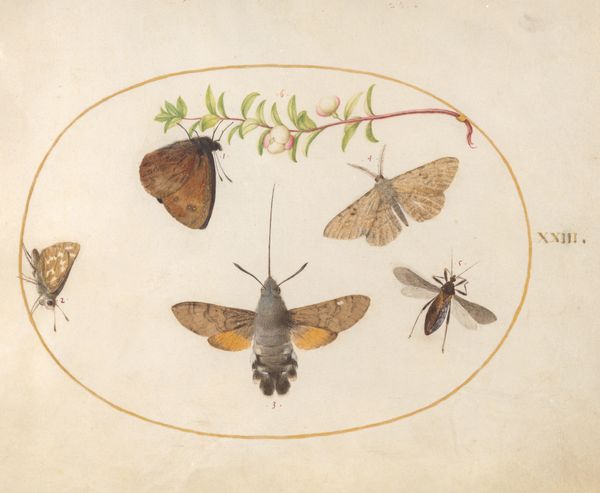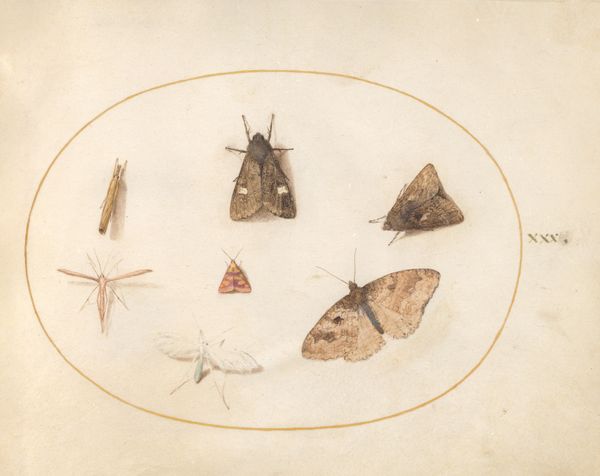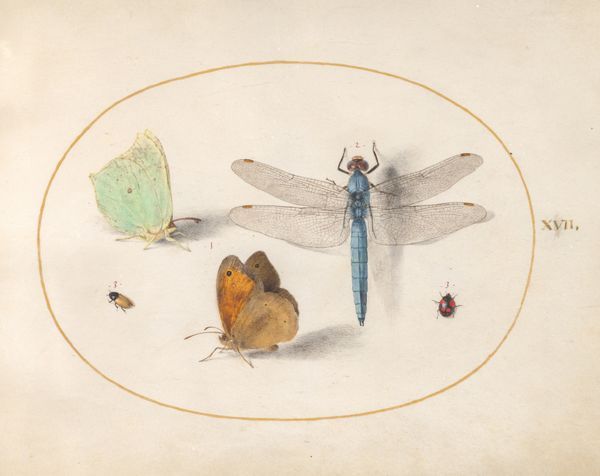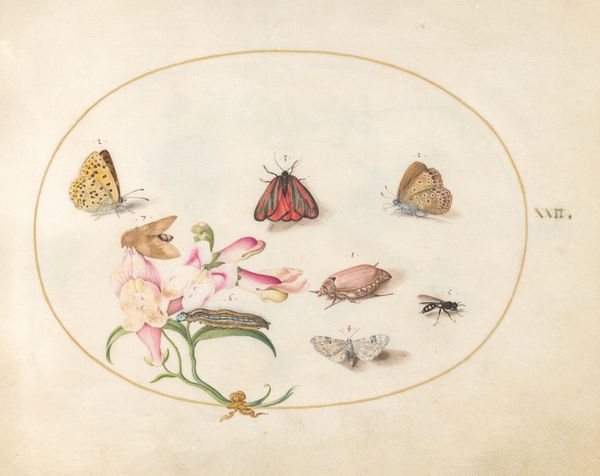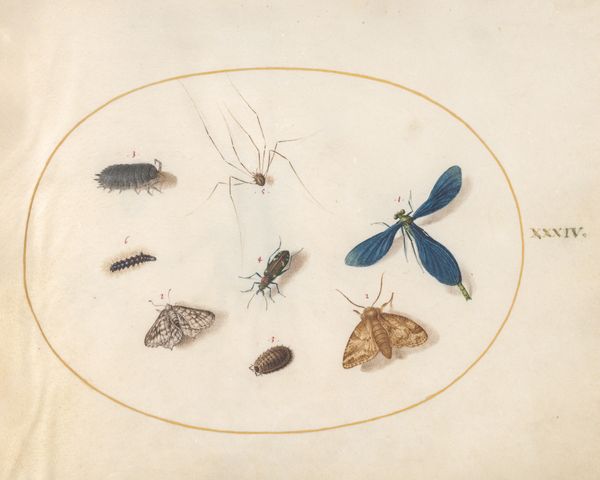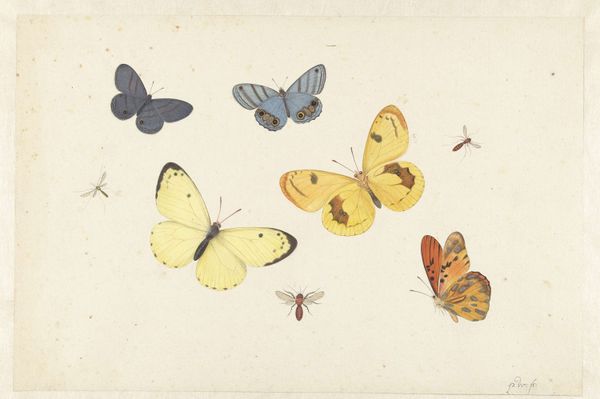
Plate 16: Black-Veined White, Clouded Yellow, Black Hairstreak(?), Geranium Argus(?), and Common Blue Butterflies with Two Chrysalides c. 1575 - 1580
0:00
0:00
drawing, coloured-pencil
#
drawing
#
coloured-pencil
#
mannerism
#
11_renaissance
#
coloured pencil
#
botanical art
#
miniature
#
watercolor
Dimensions: page size (approximate): 14.3 x 18.4 cm (5 5/8 x 7 1/4 in.)
Copyright: National Gallery of Art: CC0 1.0
Editor: Here we have "Plate 16: Black-Veined White, Clouded Yellow, Black Hairstreak(?), Geranium Argus(?), and Common Blue Butterflies with Two Chrysalides," created around 1575-1580 by Joris Hoefnagel, using coloured pencil. It’s a lovely, very detailed image of butterflies, arranged within this thin oval border, almost like a specimen display. What strikes you about this work? Curator: What immediately catches my eye is how this delicate drawing encapsulates the burgeoning scientific interest of the late Renaissance, fueled by exploration and colonialism. These 'cabinets of curiosities,' so to speak, displayed nature as something to be dissected, categorized, and owned. Editor: Owned? Curator: Yes, consider the act of pinning and displaying butterflies. While Hoefnagel's work doesn't depict that literally, it participates in that mode of observing and possessing nature. This wasn’t just objective scientific documentation; it was intertwined with power dynamics. Where do you think these images were circulated? Editor: Probably amongst wealthy patrons, maybe? To show off their knowledge or collections? Curator: Exactly. The very act of commissioning such detailed works reflects a specific socio-economic position. Furthermore, this work's miniature scale suggests it was destined for an intimate setting, reinforcing the exclusive nature of this kind of scientific inquiry. Editor: So, it’s not just a pretty picture of butterflies; it tells a story about who was in power and how they viewed the world? Curator: Precisely! It makes you consider how scientific observation can also be a social and political act. Editor: I'll definitely look at these natural history illustrations differently now.
Comments
No comments
Be the first to comment and join the conversation on the ultimate creative platform.
